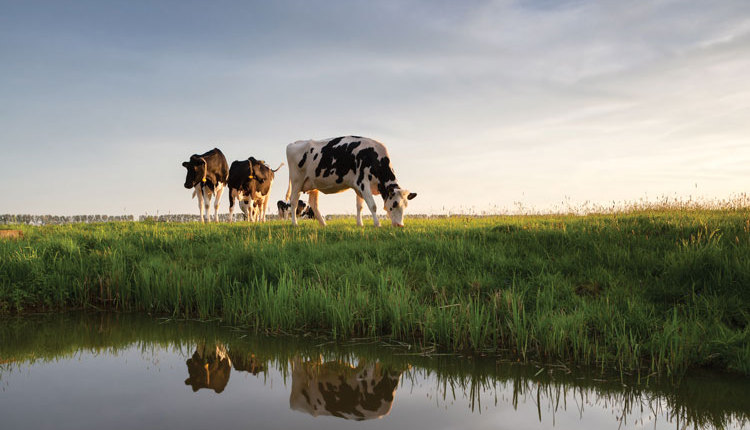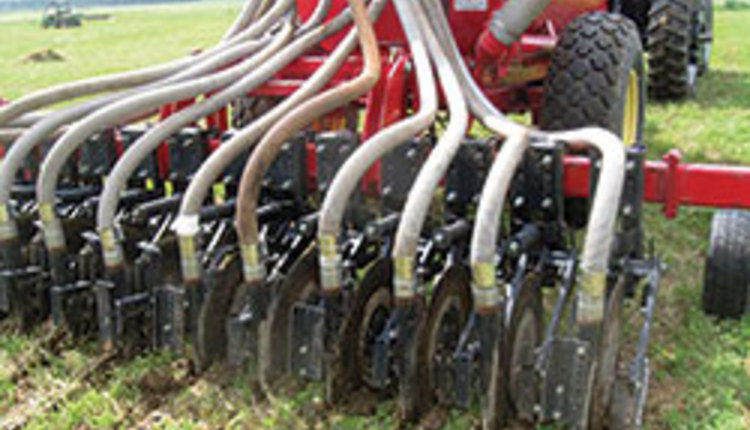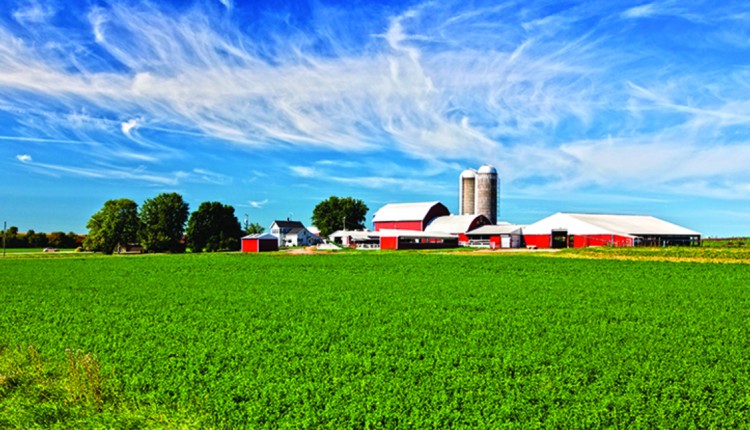Crop production in Northern regions is characterized by short growing seasons and seasonally high runoff potential. Soils warm slowly in the spring with extended periods of wetness, posing crop production and environmental risks.
Nutrient use efficiency (NUE) is the relative amount of applied nutrient that ends up in a crop. It varies widely by crop, weather, fertilization methods, and others factors.
Applying manure to actively growing crops (after hay cuttings or to cover crops, for example) or immediately prior to planting annual crops like corn can improve NUE and reduce losses. Methods of application also impact manure NUE.
From an NUE standpoint, applying manure in late fall, winter, and early spring (often termed the nongrowing season) is not ideal. Soils are generally wetter with higher runoff potential and depressed soil biological activity. In addition, freeze-thaw transitions have a major impact on runoff potential and nutrient movement. Frozen soils allow minimal infiltration and can elevate dissolved phosphorus (P) mobility to surface water with rapid snow melting.
Surface runoff and erosion processes drive both topsoil and P loss in many places. Mitigating surface runoff from field nutrient source areas is critical to maintain soil organic matter and crop productivity and for reducing nutrient runoff risk, particularly for farms adhering to water quality regulations.
Snowmelt accounts for a substantial amount of the annual water budget and surface runoff in cold climates. While manure application to frozen, saturated, or snow-covered soils is discouraged in general for agronomic and environmental reasons, manure is still routinely applied under a wide range of weather conditions, including close to the onset and during the nongrowing season.
Many dairy operations have a limited number of fields that can reasonably receive manure and often have a need to fall-apply manure to fields with or without a cover crop. Fall-applied manure remains close to the soil surface where it is exposed to freezing temperatures followed by variable melting events as spring approaches. Manure nutrients in surface soil interact with melting snow, releasing nitrogen (N) and P.
Applying manure to a growing crop (hayfield or cover crop) using low-disturbance methods can reduce both soil-bound and soluble nutrients. However, some level of nutrient runoff is inevitable, depending on the amount of runoff and soil N and P concentrations. Large storm events during the growing season can contribute to annual runoff losses, but losses during the nongrowing season are important to recognize in cold climates.
Available surface area for sorption and other nutrient attenuation mechanisms are compromised in frozen or partially frozen soils. The how (what method, rate, and incorporation level) and when of manure application in relation to weather and soil conditions is a critical aspect of trying to better predict runoff nutrient loss risk from manure.
The manure matters, too
While multiple field-related factors (soil type and drainage, hydrology, manure application method, crop system, and tillage intensity) affect actual runoff and manure nutrient loss, manure itself also plays a role.
Livestock manure varies in physical and chemical form. In general, liquid manures (less than 6% solids) have lower nutrient content and behave more like a liquid than a solid, making them vulnerable to runoff losses under wet conditions. Manure’s flow resistance (viscosity) goes up rapidly when a higher solids content exists with a marked difference in form and ease of flow (Figure 1).

Since dry matter mass rises with solids content for a given manure source, total N and P rate applications also go up (per unit of volume applied). With this logic, applying higher solids content manure raises total nutrient application, but in a form less vulnerable to runoff flows. It is important to determine how changes in manure solids affect manure nutrient mobility and runoff nutrient losses when applied in different conditions.
Look for opportunities
While complex, modeling runoff nutrient losses, snowmelt, and other factors in cold climates has had recent success. A surface runoff P model (SurPhos) developed by Peter Vadas (USDA-ARS) and collaborators is one model that aims to simulate the snowmelt process and how it affects soluble P loss. Using 108 site years of field data, Vadas and others showed that winter manure application had a 2.5 to 3.6-fold larger runoff P loss compared to nonwinter-applied manure.
Applying at least some manure on frozen or snow-covered fields is still a fairly typical practice, particularly for farms without adequate storage. Researchers at USDA-ARS and Melissa Wilson at the University of Minnesota are investigating the effect of manure solids content on runoff N and P losses when manure is applied to a snowpack.
Results generally indicate that higher manure solids applied correspond to greater snowmelt runoff N and P concentrations and loading. However, the fraction of manure total P lost to snowmelt runoff was lower for semisolid manure compared to liquid manure, suggesting some possible influence of solids content on manure-P mobility in the snowpack.
Handling manure in cold climates is an evolving science. Farms should focus on applying manure closer in time to crop growth and to unfrozen soils without snow cover to the extent possible. New ways of applying manure before planting or to growing crops should also be considered.
Reconsidering time windows and crops that can receive manure while avoiding manure application to high-risk fields at times of high runoff risk can ultimately increase NUE. As a result, we can reduce environmental risk associated with manure application in cold climates.
This article appeared in the February 2020 issue of Journal of Nutrient Management on pages 16 and 17.
Not a subscriber? Click to get the print magazine.








